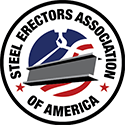|
According to the Center for Construction Research and Training, also known as CPWR, about 26 workers die every year using aerial lifts, reports Safety+Health. The main causes of these accidents are electrocution, falls and tip-overs or getting stuck between the bucket, or guardrail and an object. Meanwhile, ANSI A92.20 from the American National Standards Institute (ANSI) and CSA B354.6 from the CSA Group, formerly Canadian Standards Association, are working to raise the standard of training for using aerial lifts. According to a report by Rental Management, the new standards will make rental stores train and prepare their customer service staff on how to help customers select the appropriate machine needed for a job. Technical maintenance staff will be trained on the new features of the machines as well as the new calibration procedures to make the transition to new equipment as easy as possible. This includes being able to fully train customers on how to properly use the equipment if it is requested. Most accidents can be avoided by checking for any damage to the lift prior to use. Ensuring that the lift has no missing parts, the ground is level and that the outriggers, wheel chokes and brakes are set before the lift is operated. It is important to maintain a minimum of 10 feet away from overhead powerlines and wear the appropriate safety gear. OSHA requires workers to wear either a full-body harness or some sort of positioning device on bucket trucks or boom lifts, and it is also important never to drive when the lift platform is elevated, and to refrain from exceeding reach limits.
Finally, selecting the right equipment for the job is a first step in preventing accidents. In its Ask an Aerial Expert column, Rental Management, responded to a question about what to consider when selecting a scissor lift for a project. “When selecting a scissor lift for a specific task to be completed, it is important to ask some basic questions to determine the height requirements for the lift, whether it will be used indoors or outdoors, if the size of the platform support the tools/objects that need to be taken to the work height, if it will accommodate the required people along with those materials, how frequently the lift will be required to move up and down, and how it will be controlled. Comments are closed.
|


 RSS Feed
RSS Feed
